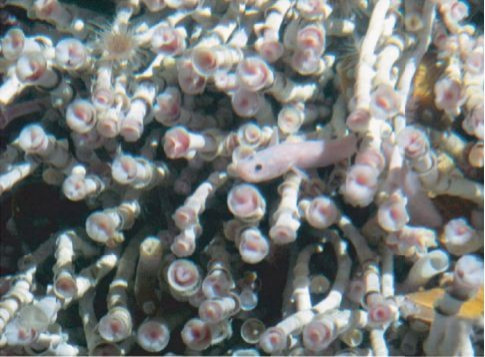Rare Deep-Sea Creatures Found in Hot and Cold Extreme Environment

Life can survive in not just one but two extreme environments at the same time, researchers found while exploring a deep-sea area in Costa Rica known as the Jaco Scar.
Oceanographers found tubeworms, clams, mussels, crabs and other creatures living between the magma-heated water flows of a hydrothermal vent and the methane-chilled water of a cold seep.
Scientists previously maintained that hydrothermal vents and cold seeps were distinct and that the two extreme conditions could not be found together.
However, the new research showed that creatures could survive the extreme temperature and chemical environments in an ecosystem oceanographers named a hydrothermal seep.
The journal Proceedings of the Royal Society B: Biological Sciences published the study on Wednesday.
The most interesting aspects of this site are the presence of vent-like and seep-like features together, along with a vast cover of tube worms over large areas and a wealth of new, undescribed species, Lisa Levin, lead researcher and professor of oceanography at UC San Diego, said in a statement.
Researchers from the Scripps Institution of Oceanography at the University of California San Diego discovered the area where the two environments intermingle and support a variety of microbes and animal species - including some never seen before.
Among the new species discovered by the oceanographers are two species of mussels and a new species of annelid, a relative of the earthworm.
Species found in hydrothermal vents and cold seeps are very different from species on the surface. The vents and seeps are found well below the area where light can penetrate, typically around 7,000 feet (2,100 meters) deep, according to the University of Delaware.
Since organisms cannot rely on sunlight for nutrients, most species found in vents and seeps rely on sulfur, a chemical toxic to most organisms, to produce nutrients through a process called chemosynthesis. Organisms that exist in these conditions are called extremophiles because they live in such harsh conditions.
Researchers visited the Jaco Scar previously to use remotely operated vehicles, but the June expedition used a submersible research craft that oceanographers said became vital for the discovery.
It wasn't until human eyes saw shimmering water flowing under a tubeworm 'bush' that we really understood how special Jaco Scar is, Leven said in a statement.
Very little is known about the deep-sea, according to the study. It's possible that more of these areas exist elsewhere and that other hybrid ecosystems exist, the authors wrote.
There are plenty of surprises left in the deep sea, Levin said in a statement. Not only are there new species but there are almost certainly new communities and ecosystems to be discovered.
© Copyright IBTimes 2024. All rights reserved.





















